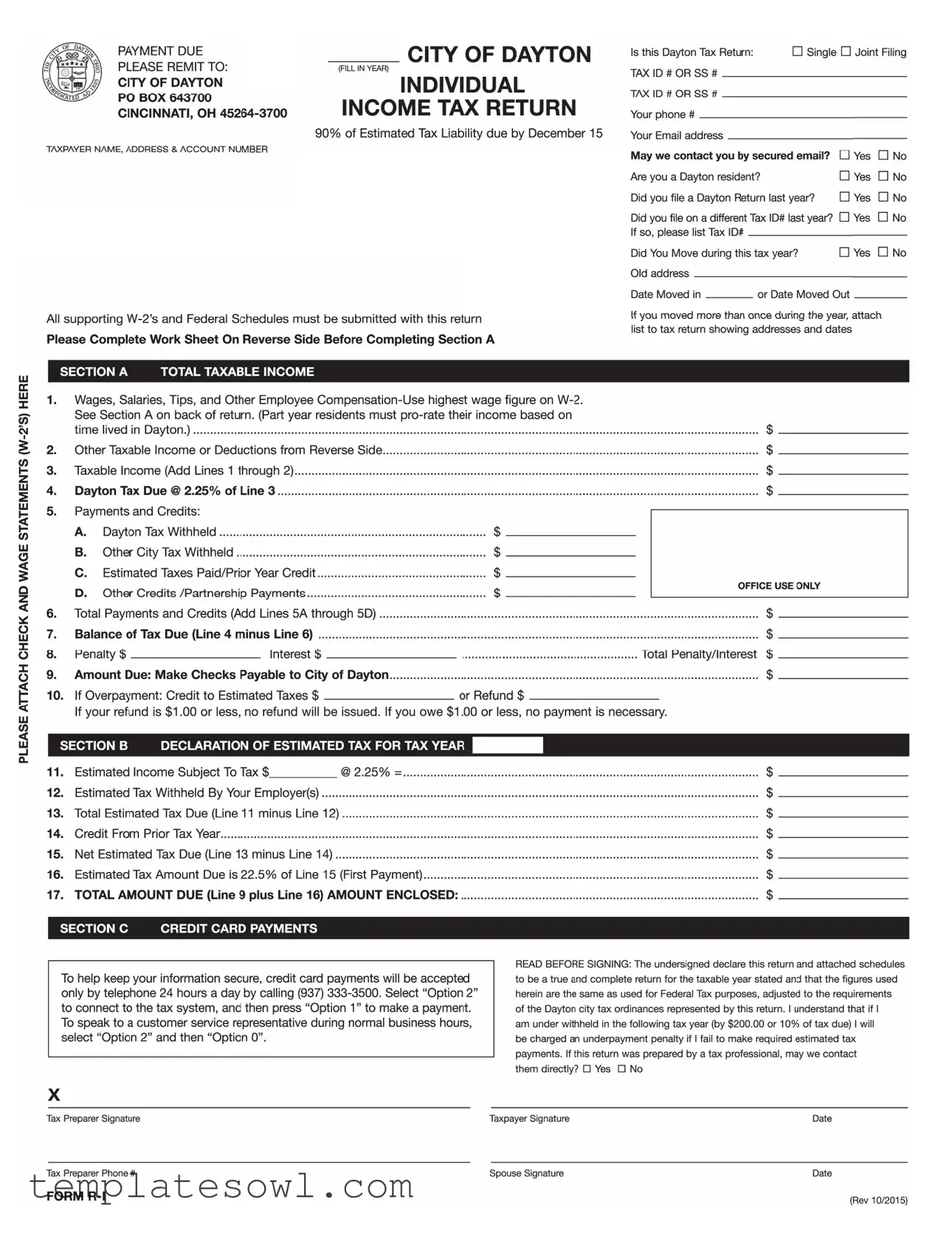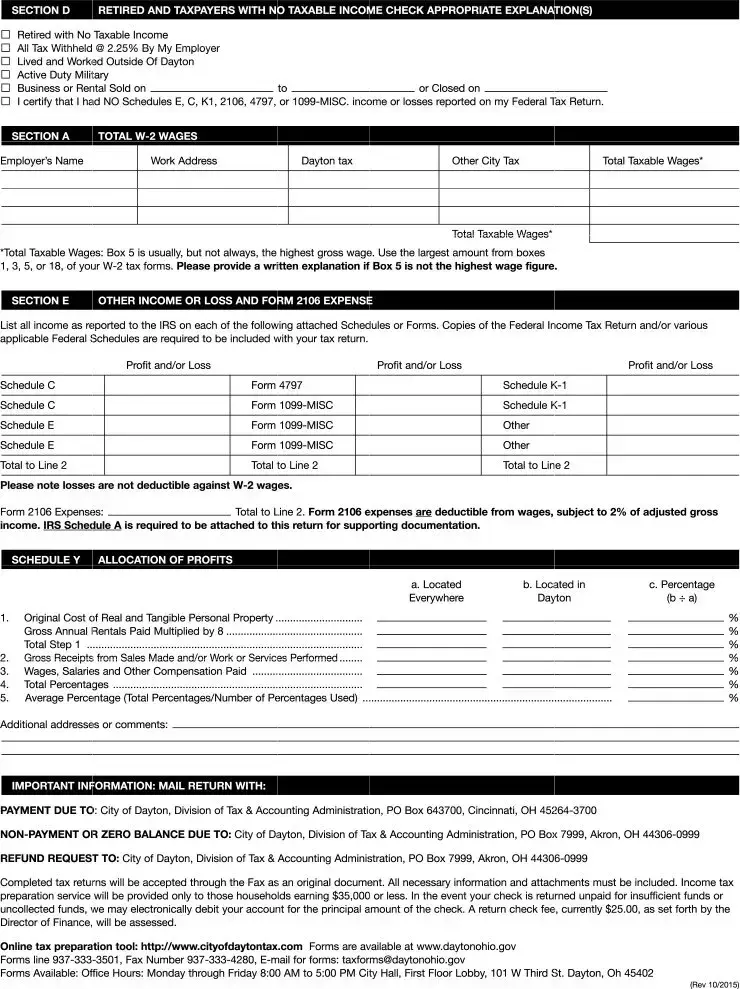What is the Dayton R 1 form?
The Dayton R 1 form is the Individual Income Tax Return for residents and non-residents of Dayton, Ohio. This form is required for individuals to report their income and calculate their tax liability to the City of Dayton. It is crucial that all income, wage statements, and required documentation are submitted with this form.
Who needs to file the Dayton R 1 form?
Everyone who earns income while residing or working in Dayton, whether as a resident or non-resident, must file this form. If you are engaged in business activities or have rental income, you may need to file in addition to reporting other sources of income.
What information is required on the Dayton R 1 form?
Essential details include taxpayer name, address, contact information, and Social Security or Tax Identification number. You will also need to provide your income details from W-2 forms, other income statements, and any credits or payments already made. Finally, ensure you mention if you've moved during the tax year and include the pertinent dates.
How do I calculate my taxable income for the Dayton R 1 form?
To calculate your taxable income, start with your total wages, salaries, and other employee compensation as reported on your W-2. If you have other taxable income, include that as well. The total taxable income will be multiplied by the Dayton tax rate of 2.25% to determine your tax due.
What if I owe taxes or have an overpayment?
If you owe taxes, the form will indicate the total due after credits have been applied. You can pay via check or by phone with a credit card. For overpayments, you may choose to apply the amount to future estimated taxes or request a refund. Be mindful that refunds of $1.00 or less are not issued.
How can I make a payment for taxes owed?
Payments can be made by check, payable to the City of Dayton, and sent to the address listed on the form. Additionally, credit card payments can be made over the phone at the designated number provided on the form. Simply follow the prompts to process your payment securely.
What should I do if I have moved during the tax year?
If you have moved, list all addresses where you lived during the year, including the dates of your moves. This information is vital to accurately calculate your taxable income, especially if you lived in Dayton for only part of the year.
What happens if my check for payment bounces?
If a payment check is returned for insufficient funds, the city may electronically debit your account for the original amount. Additionally, a return check fee of $25 may be assessed. It’s essential to ensure that funds are available before submitting your payment.
Can I file my tax return electronically?
While the form states that original documents can be submitted by fax, the City of Dayton encourages filing and submitting required documentation through the mail to ensure proper processing. Keep in mind that all forms and attachments must be included for successful submission.
How can I get help with completing the Dayton R 1 form?
If you have questions while filling out the form, you might consider reaching out to a tax professional or the customer service representatives at the City of Dayton. They can provide guidance and any necessary clarifications regarding your specific situation.


